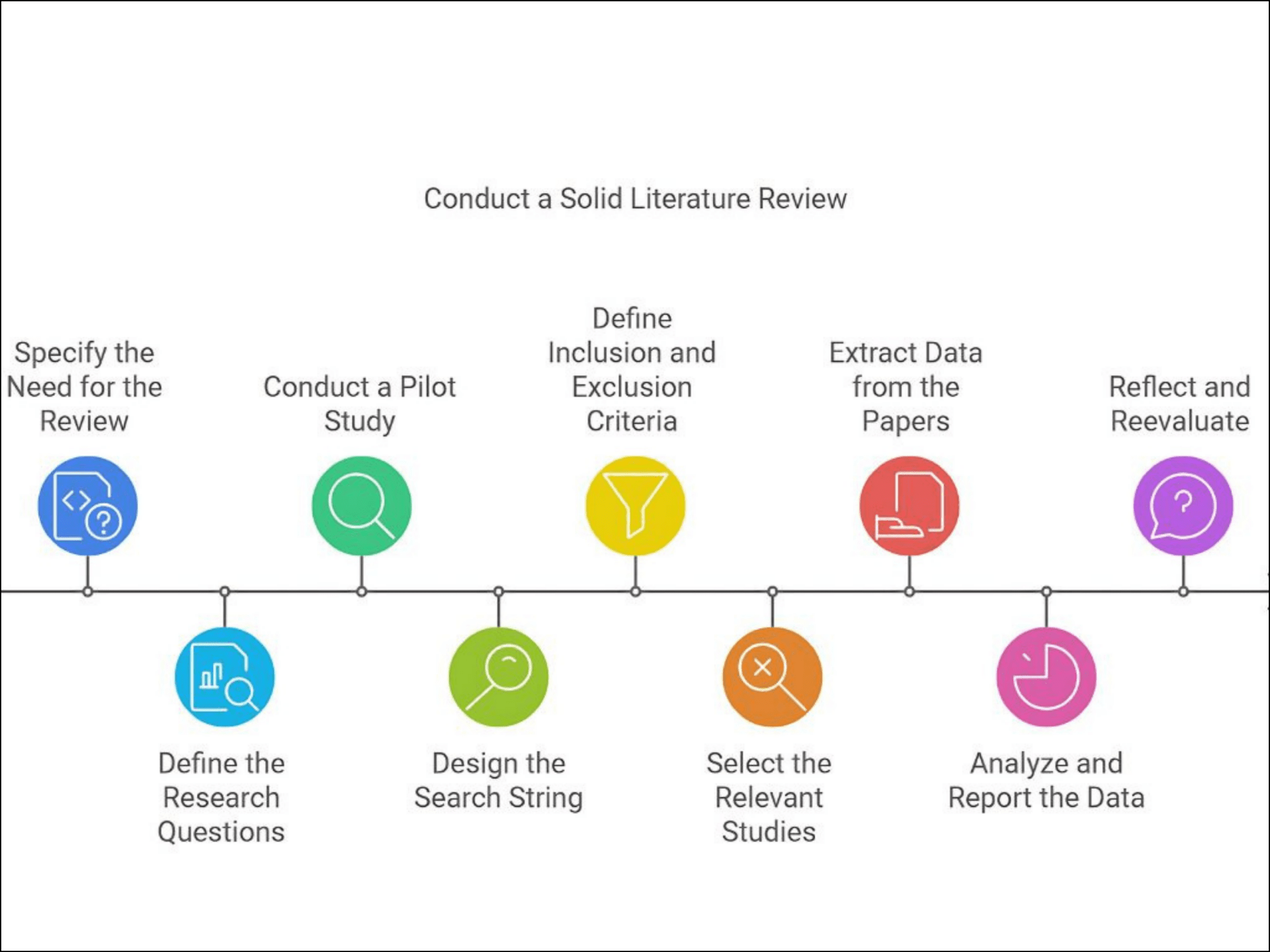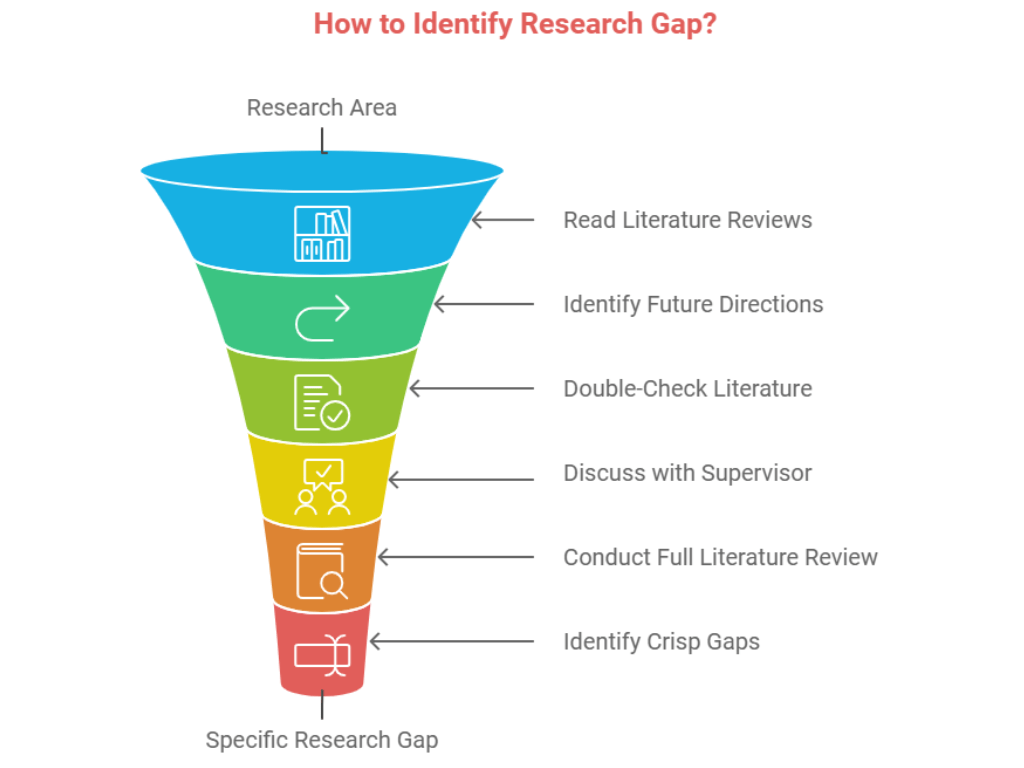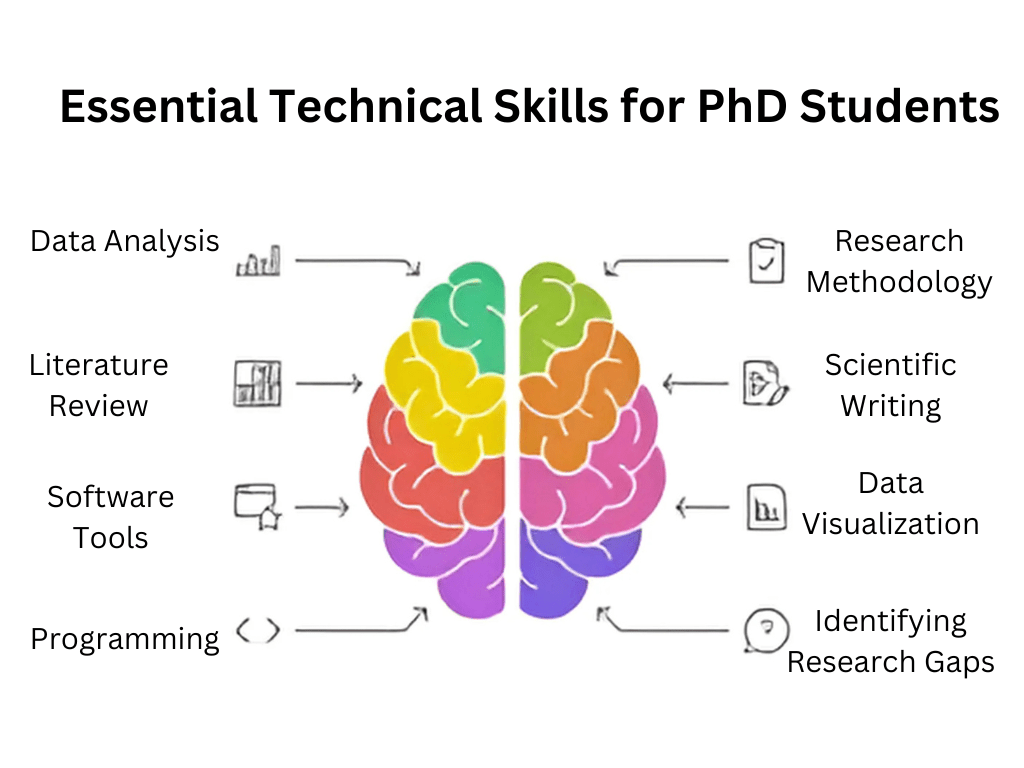If you’re feeling overwhelmed about where to begin with your literature review, you’re not alone.
Many PhD students face this challenge, but with a solid approach, you can turn it into the backbone of your research.
Let’s dive into how you can do it effectively while saving time and avoiding common pitfalls.
Here are the concrete steps you should follow for your literature review.

1. Specify the Need for the Review
Before you begin, ask yourself why you’re conducting this review. Most PhD students dive into a literature review to identify research gaps, but you could also be doing it to understand the current state of your field or define new research directions.
For instance, a PhD student studying AI applications in healthcare might identify a gap in research on AI’s role in remote patient monitoring.
Knowing why you’re conducting the review will help you stay focused throughout the process.
2. Define the Research Questions
In consultation with your advisor, nail down your broader research topic. Break it down into specific research questions, such as: “What are the key challenges and solutions in the application of AI for remote patient monitoring?”
To keep your questions organized, try mapping them out visually using a flowchart or mind map. This will help you see how each question connects and ensure you’re covering all areas.
3. Conduct a Pilot Study
Here’s a pro tip: start small.
Before diving into hundreds of papers, conduct a pilot study with 10 key papers. This will help you assess whether your research questions are too broad, too narrow, or just right.
If you find that the selected papers don’t yield useful insights, tweak your research questions now rather than later. This small investment of time upfront can save you from having to redo large portions of your review later.
4. Design the Search String
Once your research questions are set, design a search string to help you find relevant papers. Use databases like IEEE, ACM, and Google Scholar. To save time, leverage AI tools like Paperpal or Researcher that can quickly curate papers based on your topic.
Test your search string to ensure it returns the 10 key papers from your pilot study. This will give you confidence that your search is on the right track.
5. Define Inclusion and Exclusion Criteria
Your search may return hundreds, or even thousands, of papers. To avoid feeling overwhelmed, set clear inclusion and exclusion criteria. For example, exclude papers older than five years or those that don’t directly address your research questions.
If you’re struggling to filter out irrelevant papers, consider using a reference manager like Zotero or Mendeley to help organize and tag your results as you go.
6. Select the Relevant Studies
With your criteria in hand, start narrowing down your papers. You don’t have to read every single one from cover to cover right away. Begin by reviewing titles and abstracts, and then focus on the most promising papers for deeper reading.
Efficiency is key here. Use a tool like Paperpile to keep track of papers you need to read more closely without losing track of the big picture.
7. Extract Data from the Papers
Now that you’ve selected the relevant studies, it’s time for data extraction. Design a form that outlines exactly what data you’ll pull from each paper—things like study methodology, results, and key findings.
For example, if you’re reviewing AI studies, your extraction form might include details like the type of AI model used, its accuracy, and any limitations mentioned. This will help you organize and compare data across different studies.
8. Analyze and Report the Data
Once you’ve extracted the data, analyze it using appropriate methods. If you’re handling qualitative data, thematic analysis might be a good choice. For quantitative studies, consider a meta-analysis or narrative synthesis, depending on your field.
As you analyze, document your findings in a structured report. This will not only help you keep track of your insights but will also form the foundation for your PhD research.
9. Reflect and Reevaluate
At this point, it’s important to pause and reflect. Are the papers you selected truly answering your research questions? If you find gaps, this is a good opportunity to revisit your search strategy or refine your research questions.
This reflection step can save you time and frustration down the road by ensuring that your review is staying on target.
10. Stay Up-to-Date
Remember, research is constantly evolving. To ensure your literature review stays relevant, set up alerts in Google Scholar or your preferred databases. This way, you’ll receive notifications when new papers in your field are published.
Being proactive about staying current will not only help your literature review but will also keep your research informed throughout your PhD journey.
Action Step for This Week:
If you’re just starting your PhD, follow these 10 steps to guide your literature review process. If you’re already in the middle of your review, revisit steps 1-3 to make sure your questions and focus are still on track.
Set up a Google Scholar alert to stay on top of new publications, and test out tools like Paperpal or Zotero to streamline your work.
Let me know how it goes or if you have any questions!



Thanks too much for this information . really lam reseacher in AlGadarif University and PhD Holder I want to re writer my baber the title is accessibility and applicability of the nine patient safety solution in AlGadarif teaching hospitals..Sudan 2011.
Later I will sent to you . more in shal Allah.
Thank you for the comment, Fardos. All the best for your PhD.
Excellent Resource for doing PhD
High relevant information. Thanks and God bless u
Pingback: What are the different types of research questions?
Also that we would do without your very good phrase
Pingback: How to Write the Conclusion Section of Your Research Paper?
I congratulate, this remarkable idea is necessary just by the way